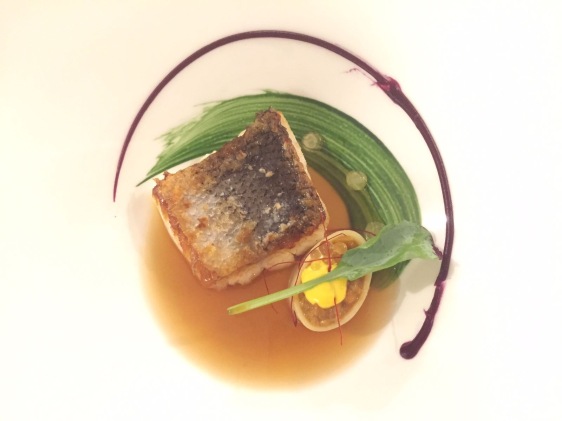Massimo Bottura is a cool man. Of course, coolness is subjective; he’s my idea of cool. Thick rimmed glasses, grey stubble, short curly hair. More importantly, an indefatigable appetite for life, an authentic passion for his trade, and a commitment to improving the lives of those around him make him stand out.
I first heard of Bottura watching the Netflix series Chef’s Table, the peerless documentary series showcasing the lives and foods of the world’s greatest chefs. The first episode told the story of the charismatic Italian, whose attempts at modernising Italian cuisine had initially been met with considerable suspicion by food traditionalists, which in Italy means pretty much everyone.
What impressed me most, however, was not his mouthwatering, creative dishes, more artistic than anything I’d seen before. It was his personality and, more than anything, his dedication to making people happy. The episode’s opening scene showed the devastating earthquake that struck northern Italy in 2012, killing 27 and causing untold damage to, among other things, millions of pounds worth of Parmesan cheese. Bottura helped raise awareness and showcased the local, world-famous, cheese in his food, providing the industry with a recovery boost.
Osteria Francescana, the tiny, unpretentious restaurant that in 2016 was named best in the world, is Bottura’s baby. Having worked in New York and Paris, bastions of fine dining, Bottura chose to come home, to Modena, home of Pavarotti and Ferrari, to open his own place. A local museum guide told me how proud she was of Bottura’s decision.
Francescana is set in the heart of Modena, a beautiful town just north of Bologna. While travelling through northern Italy I dreamt of going there. Sadly, unlike Aziz Ansari and Eric Wareheim in the latest series of Netflix’s Master of None, I couldn’t afford the €220 price for a nine-course tasting menu.
Bottura, however, is dedicated to providing quality food to everyone. In the 2016 Olympics he helped turn food waste into meals for Rio’s homeless, a project repeated this year in London. He also has a far more affordable option, just outside Modena’s historic centre. It’s still pricey, and portions are small, but my god is it good.

Franceschetta58 offers Michelin-star quality food for a fraction of the price. I opted for the lunch menu, a reasonable €25 for three courses. The restaurant is laid back and casual. Daft Punk lyrics adorn the walls while James Brown and Stevie Wonder provided the soundtrack. Attractive French waitresses glide between tables handing out cutlery in old watering cans. It veers perilously close to faux hipster pretension but nevertheless retains an authentic vibe, probably due to Bottura’s personality, or my idea of it at least.
Picking a highlight from the meal is tough; almost everything I ate was top quality. Is it even okay to choose the bread? Seriously, that focaccia. I tried a lot of focaccia during my 10 days in Italy, it was my go-to snack. This was next level: perfectly spongy texture, just the right amount of oil, salt and air. If this was the only thing I was served I still would’ve given Franceschetta a positive review.

For starters I opted for one of Bottura’s famous creations, the Emilia burger, named after the local region, Emilia-Romagna, which produces so much of Italy’s world-famous produce (parmesan, Parma ham, balsamic vinegar, bolognese, mortadella, the list goes on). It’s small, and by small I mean small; a slider rather than a burger, a small one at that. The patty is a delightful mixture of pork, beef and parmesan, and the cheese really shines through. It was rare, just how a good burger should be. The salsa verde, mostly parsley, provided a fresh balance to the meat. But the balsamic reduction was slightly overpowering; it was the only (very minor) negative. The burger was still great, and tasted especially good paired with a local red Sangiovese.
Next came the party piece, a perfectly-grilled octopus, each sucker, not an enticing term, housing a pool of olive oil. It was good, but even better when eaten with the fried cauliflower perched alongside it, which tasted almost of crispy seaweed. The accompanying cauliflower and smoked oil mousse was divine.

I probably wouldn’t have ordered the only dessert on offer, but I’m bloody glad I was cornered into it. It was a sensational coffee and orange cream, with crumbled chocolate biscuits and raspberries. I finished with a coffee and a surprisingly pocket-friendly bill of €35.
Have Italians accepted Bottura’s experimentation with traditional Italian cuisine? It seems so, everyone I spoke to in Modena about him was rightly proud. There were Italians there, but over half the clientele were foreign, mostly French and American. Franceschetta58 is certainly worth a visit. Hell, I basically went to Italy to go there. Of course, we’d all like to be able to visit its big brother, hopefully one day I will. But the more accessible version allows the rest of us to see just why an excitable Italian from Modena has become one of the world’s most celebrated chefs.




